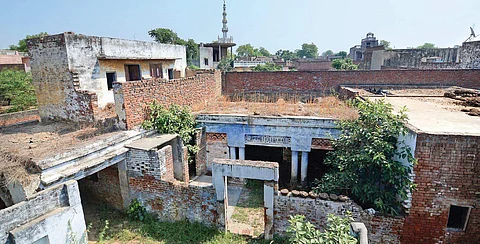

UTTAR PRADESH/RAJASTHAN/HARYANA: "Muslims were not killed. They got scared and suffered heart attacks,” giggle a group of young men in front of lush green sugarcane farms in Lisarh village of Shamli district.
Shamli was in the eye of the 2013 communal riots between Jats and Muslims in which 62 people, including 42 Muslims, were killed and tens of thousands were displaced.
“Now that Muslims no longer live here, everything is fine. They were the ones who started the violence. Riots benefitted them financially. Many Muslims died of heart attacks but later their families claimed they died in communal violence, and claimed compensation,” says 28-year-old Sonu Ompal, a Jat.
Over the last five years, efforts have been made by both communities to rebuild the social fabric that was ripped to shreds. But these efforts have mostly failed.
The only Muslim family in Jat-dominated Lisarh village says returning to the village was an obligation because of livelihood.
Frenzied mobs over the last five years sowed hatred and suspicion among communities when, over cow protection, they consumed the life of Mohammed Akhlaq in Sept 2015 in Uttar Pradesh, killed Rakbar Khan and Pehlu Khan in 2017 in Rajasthan, and murdered police officer Subodh Kumar Singh in UP last year, not to talk of the brutality with which they finished off their victims in Jharkhand, Haryana, J&K and Assam.

50-year-old Mohammad Islam—who lives with six other family members—has 13 bighas of land and has a good business of wood-work here.
“We also left the village and came back only after four months when village elders made an appeal to return. 15 other Muslim families came with me but some houses belonging to Muslims were again set on fire. They got scared and left. Though there has been no violence since then, I often ponder about my existence in the village,” Islam says as he recalls how his house was burnt and all valuables were stolen when violence broke out.
At one time, according to 2011 census, Lisarh had a population of 13,077 people of which 2,500 were Muslims. Today Islam and his family are the only Muslims who live here.
In Muzaffarnagar’s Kutba village, Muslims who fled haven’t returned even after five years. With no Muslim in the village now, houses of Muslims either lie abandoned or have been turned into cowsheds. Eight Muslims were killed in the riots here.
“We used to live in harmony,” says Narender, a Jat farmer, whose son is an accused in a murder case.
This was a well-planned move by politicians to polarise Hindus and Muslims. All local BJP politicians gave incendiary speeches asking Jats to “save their honour”.
"There was widespread killing thereafter. Why would Hindus kill Muslims otherwise? Actual perpetrators are roaming free but poor people like my son have been falsely implicated,” he adds.
Political scientist Sudha Pai, who has spent much of her professional life studying UP’s communal and caste politics, says disregard for law led to an increase in communal clashes and hate crimes in the last five years.
“There was a total breakdown of law and order--whether it was mob violence or communal clashes. The government did not stop cases of lynching which have been going on. In fact, in many cases, victims were persecuted.
The government and police is supposed to be fair and neutral but that was not happening. A large part of such crimes in the last five to six years have taken place due to laxity on part of the government.
Even the Muzaffarnagar riots which took place before 2014 could have been avoided if the then Samajwadi party acted firmly from the beginning.” Pai also spoke about bringing a new law to deal effectively with cases of communal crimes and protecting minorities.
“A bill was prepared for prevention of communal and targeted violence but nothing really happened. Though the existing laws are enough but because they are not properly implemented in cases of communal violence, the new government should consider such a law. For instance, the SC/ST Prevention of Atrocities Act is effective when it comes to protecting the disadvantaged group like SC/ST. Then why not have a similar law for protection of minorities who are smaller in number and have been the target in recent years.”
The cow is a running theme in the Mewat region—which comprises parts of Rajasthan and Haryana where many Muslims have either been falsely implicated on charges of cow slaughter and some like Rakbar Khan’s family have seen much worse.
Saleemuddin, a cattle farmer in Rajasthan’s Alwar district, has stopped buying cows in fear of cow vigilantes.
“My son, who works at a private firm in Alwar, has given me his savings to buy a truck. The family fears I will suffer the same fate as Rakbar and Pehlu who were lynched in the name of cow.”